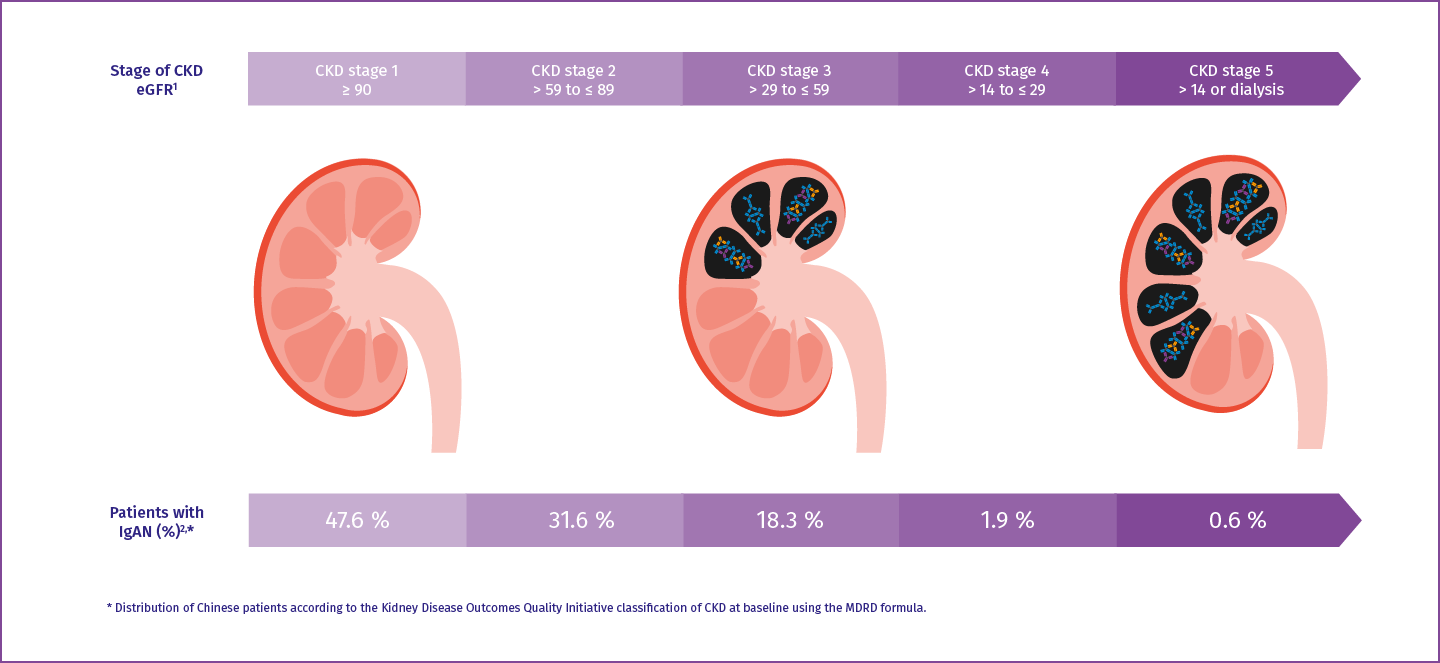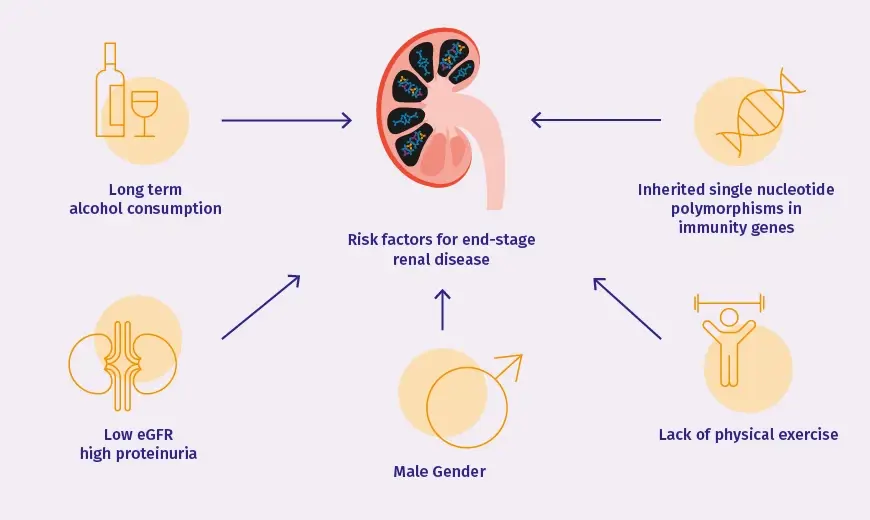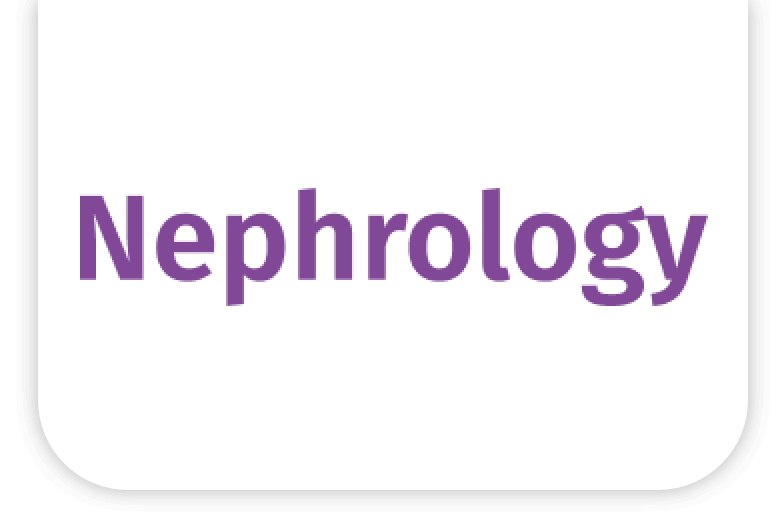IgAN results in gradual deterioration of renal function
In the early stages, IgA Nephropathy is frequently asymptomatic and, in many cases, can remain undetected until there is a noticeable impairment of renal function.1 It is thus often the case that the disease is diagnosed by chance. Urine abnormalities that can be an indication of the presence of IgA Nephropathy, such as haematuria and proteinuria, are often only noticed by a general practitioner during a routine examination.2
At time of diagnosis, more than 50% of those affected have a reduced GFR.
Distribution of patients with IgA Nephropathy by eGFR and CKD stages at time of diagnosis

CKD: chronic kidney disease; eGFR: estimated glomerular filtration rate; IgAN: immunoglobulin A Nephropathy; MDRD: modification of diet in renal disease
*Distribution of Chinese patients by their CKD classification per the guidelines of the Kidney Disease Outcomes Quality Initiative (KDOQI) at baseline using the MDRD formula.
Adapted from: Fraser SD et al. (2016)3; Le W et al. (2012).4
How fast does IgA Nephropathy progress?
The progression of IgA Nephropathy can differ greatly from individual to individual. Some of those affected suffer from a mild form only, in which their renal function is retained. Ultimately, 25-30% of those with IgA nephropathy develop end-stage renal disease within 20-25 years of the first onset of the disease.5
Prevalence of end-stage renal disease in patients with IgA Nephropathy over time*,5,6
⚠️ UNMAPPED COMPONENT - MANUAL REPLACEMENT REQUIRED ⚠️
UNMAPPED COMPONENT: NotFound
Legacy Page ID: 3974
Legacy Page Name: Animated Stats
Legacy Page Type: animatedStats
You can use this id to load the correct node on the legacy site backoffice
*Progression rates can vary due to regional differences with regard to local biopsy guidelines.7
There are several risk factors that determine progression of IgA Nephropathy to end-stage renal disease.

Huang PP et al. (2019)8; Zhang YM et al. (2017).9
There are various genetic- and environmental related risk factors that increase progression of IgA Nephropathy until it finally manifests as end-stage renal disease. For example, a history of (excessive) alcohol consumption and lack of physical exercise have been identified as independent risk factors for the development of end-stage renal disease. In addition, low estimated glomerular filtration rate (eGFR) and a high level of proteinuria in those with IgAN at time of biopsy are also associated with an increased risk of end-stage renal disease.
Learn more about IgAN




